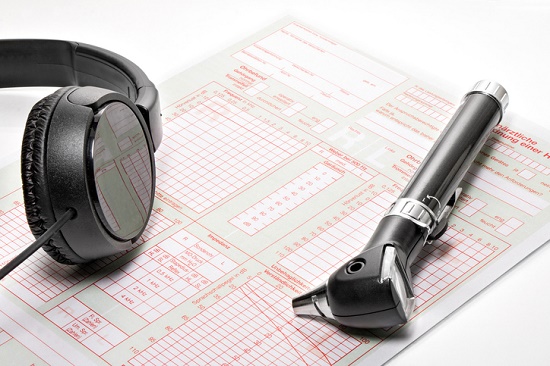
The hearing test truly is the easy part. The tricky part is acknowledging your hearing loss and actually reserving the hearing test in the first place.
You’ve more than likely heard the statistics by now: 48 million individuals in the US have hearing loss but only a minor fraction actually do something about it, and only 20 percent of those who could reap benefits from hearing aids actually make use of them.
So if you’ve already scheduled your hearing test, congrats, you’ve already conquered the largest hurdle to healthier hearing.
The hearing test, as you’ll witness, is a simple and easy, non-invasive procedure that will uncover the severity of your hearing loss to help institute the most appropriate treatment course.
After you initially arrive at the office, you’ll start by completing some paperwork. Then, you’ll consult with your hearing care provider to discuss your hearing health history.
Your Hearing Health History
Your hearing loss, if present, can be brought on by direct exposure to loud sound, the natural aging process, or by an underlying condition. You’ll want to rule out any underlying medical conditions prior to moving on to the actual hearing test.
If you have an impaction of earwax, as an example, you may very well be hearing better within a few minutes shortly after a professional cleaning. The presence of any other conditions will be evaluated and the appropriate referral made, if necessary.
After going over your general medical history, you’ll review your exposure to loud sounds, your hearing loss symptoms, and what you would like to achieve with better hearing.
It’s essential to establish potential causes, how symptoms are negatively affecting your life, and how better hearing will improve your life, which is in the end the whole point. Be leery of the practitioner that doesn’t seem to care about the main reasons why you desire to enhance your hearing to begin with.
Testing Your Hearing
There’s one additional step before beginning the hearing test: the visual investigation of the ear with a device called an otoscope. This will help rule out any issues with the ear canal, the eardrum, or the elevated buildup of earwax.
Next, you’ll be accompanied to a sound-treated room with your hearing care provider. You’ll be instructed to wear headphones, and the specialist will begin to play you some sounds.
You will be presented with different sounds at different frequencies, and you’ll be requested to identify the quietest sounds you can hear at each frequency. This is labeled your hearing threshold, and the hearing care provider will capture these values on a chart called an audiogram.
The hearing test will probably also incorporate speech testing, where you’ll be instructed to repeat the words presented to you. Assorted types of words, delivered at various volumes with and without background noise, will be introduced. This will help confirm if hearing aids can help you with speech comprehension.
When the hearing test is concluded, your hearing care professional will review the results with you.
Assessing Your Hearing Test Results
Referencing your audiogram, your hearing care professional will now talk about your hearing in both ears. Depending on the results, your hearing will be categorized as normal or as displaying mild, moderate, severe, or profound hearing loss.
If a hearing loss is found, the next move is talking about your treatment options. Seeing that there are no current medical or surgical treatments to restore hearing damage, this means evaluating your hearing aid options.
Present hearing aids come in a wide array of shapes, sizes, and colors, at different prices with several advanced features. In choosing your hearing aids, it’s crucial to work with a qualified hearing care professional for three main reasons:
- They can help you identify the best hearing aid model to satisfy all of your goals.
- They can help you identify the advanced features you need—along with the ones you don’t—at a price tag that works with your budget.
- They can program your new hearing aids to amplify only the sounds you have difficulty hearing—identified by the hearing test—ensuring optimal sound quality.
And that’s it, a fast, simple procedure in exchange for a lifetime of healthier hearing. We’d say that’s a pretty good deal.
We look forward to seeing you!

